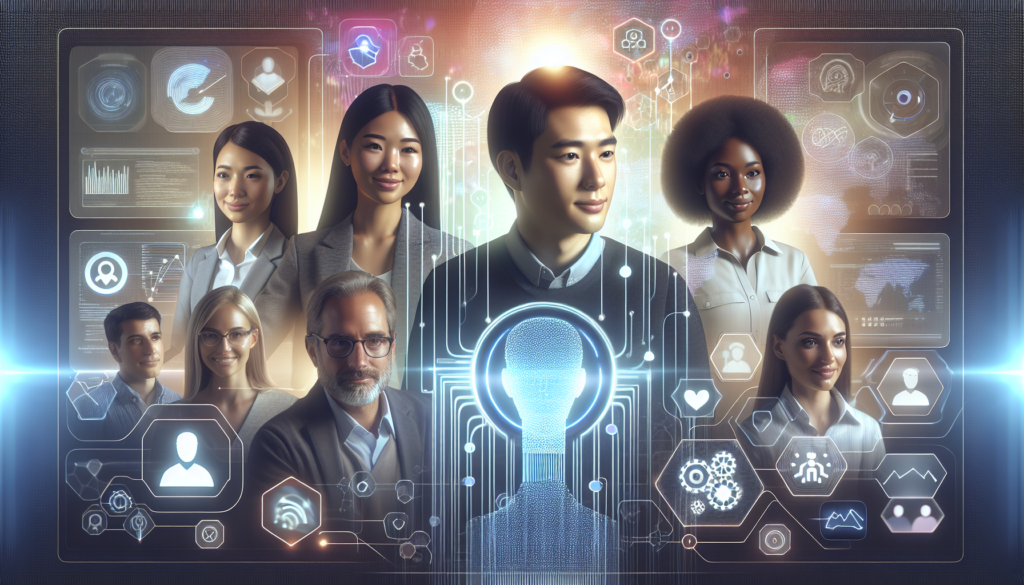Imagine having an AI-driven virtual assistant that can provide exceptional support and guidance to your online group. This revolutionary technology is enhancing the virtual group experience, making collaboration and communication smoother than ever before. From chatbots that can answer your questions in real-time to personalized recommendations based on your group’s interests and goals, this AI-driven virtual group support is a game-changer. In this article, we will explore the benefits of leveraging this cutting-edge technology and how it can transform your online group interactions. So, sit back, relax, and get ready to discover the exciting world of AI-driven virtual group support.
Enhancing Virtual Group Support with AI-driven Technology

Introduction to AI-driven Virtual Group Support
In today’s interconnected world, virtual group support has become increasingly important, especially in the wake of social distancing measures and remote work environments. However, providing adequate support to virtual groups can be challenging, considering the lack of face-to-face interaction and the need to facilitate seamless communication and collaboration. This is where AI-driven technology can significantly enhance virtual group support, revolutionizing the way teams work together and maximizing their productivity.
The Importance of Virtual Group Support
Virtual group support plays a crucial role in promoting teamwork, knowledge sharing, and problem-solving within groups that are physically dispersed. It enables team members to connect, communicate, and collaborate, despite geographical boundaries, time zones, and other logistical constraints. Effective virtual group support fosters a sense of belonging and camaraderie among team members, leading to improved morale, engagement, and overall group performance.
Challenges in Virtual Group Support
While virtual group support offers numerous benefits, it also presents challenges that need to be addressed. Some of these challenges include:
- Communication barriers: Without face-to-face interaction, misinterpretation of messages and lack of non-verbal cues can hinder effective communication within virtual groups.
- Lack of cohesion and trust: Building trust and fostering a sense of teamwork can be more challenging in a virtual environment, where team members may have limited opportunities to interact and form personal connections.
- Coordination and scheduling difficulties: Coordinating schedules across different time zones can be cumbersome, often resulting in delayed responses and difficulty in coordinating group activities.
- Knowledge sharing and collaboration: Sharing knowledge and collaborating on projects may be hindered by limited access to information, lack of transparency, and difficulty in identifying relevant expertise within virtual groups.
Understanding AI-driven Technology
Artificial Intelligence (AI) refers to the simulation of human intelligence in machines that are programmed to think and learn like humans. AI-driven technology utilizes algorithms and machine learning to analyze data, make predictions, and perform tasks that traditionally required human intelligence. In the context of virtual group support, AI can provide automated assistance, streamline processes, and enhance communication and collaboration among team members.

Benefits of AI-driven Virtual Group Support
AI-driven technology has the potential to revolutionize virtual group support by providing several key benefits:
- Improved communication: AI-powered chatbots and virtual assistants can facilitate real-time communication, ensuring quick response times and enhancing overall communication effectiveness within virtual groups.
- Enhanced collaboration: AI-driven technology can optimize knowledge sharing and collaboration by providing intelligent recommendations, identifying relevant expertise, and streamlining information access across the virtual group.
- Increased productivity: AI-powered virtual assistants can automate routine tasks, freeing up time for team members to focus on more strategic and value-added activities, thus enhancing overall group productivity.
- Personalized support: AI-driven virtual assistants can provide personalized support and tailored recommendations based on individual preferences, ensuring a more customized and satisfying experience for each team member.
AI-driven Chatbots for Virtual Group Support
AI-driven chatbots are virtual support agents that use natural language processing and machine learning algorithms to simulate human-like conversations with users. In the context of virtual group support, chatbots can provide instant assistance, answer frequently asked questions, guide users through processes, and even offer emotional support. These chatbots can significantly enhance the accessibility, responsiveness, and efficiency of virtual group support, ensuring that team members can quickly obtain the information they need and resolve issues in a timely manner.

AI-powered Virtual Assistants for Virtual Group Support
AI-powered virtual assistants take chatbot technology a step further by providing intelligent, context-aware assistance to virtual groups. These virtual assistants can not only respond to questions and provide information but also proactively assist with tasks, offer recommendations, and automate routine processes. With the ability to integrate with various tools and platforms, virtual assistants can simplify complex workflows, streamline collaboration, and improve overall group efficiency. Additionally, virtual assistants can adapt to individual preferences and learn from previous interactions, ensuring a more personalized and tailored experience for each team member.
Implementing AI-driven Technology in Virtual Group Support
To successfully implement AI-driven technology in virtual group support, organizations need to consider a few key factors:
- Identify specific needs: Determine the specific pain points and requirements within the virtual group support process to determine how AI-driven technology can best address these needs.
- Choose appropriate AI solutions: Select AI-driven tools and platforms that align with the organization’s goals, budget, and technical requirements. Consider factors such as scalability, ease of integration, and compatibility with existing systems.
- Provide adequate training: Ensure that team members are trained in using AI-driven tools effectively and understand the potential benefits and limitations of the technology.
- Monitor and adapt: Continuously monitor the performance and user experience of AI-driven systems and be prepared to make adjustments and refine the implementation based on feedback and changing needs.

Considerations and Limitations of AI-driven Virtual Group Support
While AI-driven technology offers numerous benefits, there are also considerations and limitations to be aware of when implementing virtual group support:
- Privacy and data security: Organizations must ensure that AI-driven systems comply with data protection regulations and prioritize user privacy and data security.
- User acceptance and adoption: Some team members may be hesitant to adopt AI-driven virtual support systems, fearing job displacement or loss of control. It is important to address these concerns and emphasize the role of AI as an augmenting tool, not a replacement for human interaction.
- Potential biases and errors: AI algorithms are only as good as the data they are trained on. It is crucial to regularly monitor AI systems for potential biases and errors and implement mechanisms to correct any inaccuracies or unintended consequences.
- Technical limitations: AI-driven systems may have limitations in understanding complex or nuanced queries, handling unexpected scenarios, or providing emotional support. It is important to set realistic expectations and have fallback mechanisms for human intervention when necessary.
Future Possibilities of AI-driven Virtual Group Support
As AI technology continues to advance, the possibilities for enhancing virtual group support are endless. Some future possibilities include:
- Advanced natural language processing: AI-driven virtual assistants will become even more adept at understanding and responding to complex queries, natural language instructions, and even emotions, leading to more intuitive and human-like interactions.
- Intelligent automation: AI-powered virtual assistants will be able to automate complex workflows, analyze data, and make informed decisions, further enhancing group productivity and efficiency.
- Emotional intelligence: AI-driven virtual assistants will develop emotional intelligence capabilities, enabling them to offer empathy and emotional support to team members, fostering stronger bonds and enhancing overall well-being within virtual groups.
- Virtual reality integration: AI-driven virtual group support could be integrated with virtual reality technology, providing immersive collaboration experiences and overcoming the limitations of physical distance.
In conclusion, AI-driven technology has the potential to revolutionize virtual group support by overcoming the challenges of communication, collaboration, and knowledge sharing within dispersed teams. By leveraging AI-driven chatbots and virtual assistants, organizations can enhance communication effectiveness, improve collaboration, increase productivity, and provide personalized support to virtual groups. However, it is important to consider the limitations and ethical considerations associated with AI and to continuously monitor and adapt the implementation of AI-driven virtual group support to ensure optimal results. With ongoing advancements in AI technology, the future possibilities for enhancing virtual group support are promising, paving the way for even more seamless, efficient, and engaging virtual collaborations.

